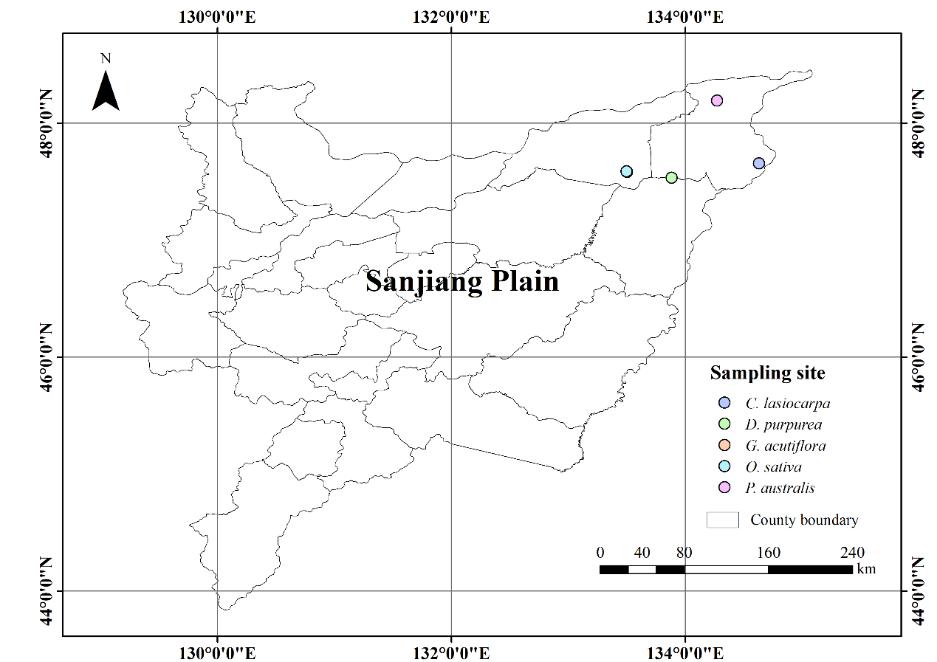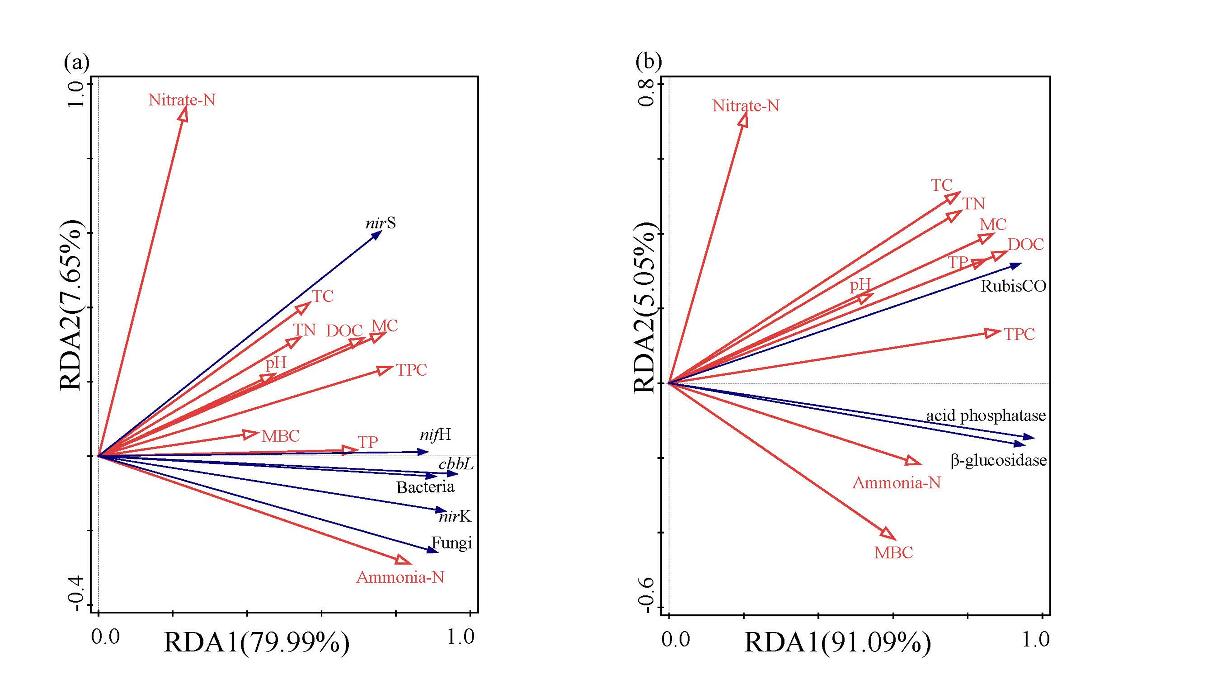Soil microbial gene abundances and enzyme activities directly influence biogeochemical cycle processes and are strongly associated with vegetation type. However, the mechanism of how vegetation types affect soil microbial abundances and enzyme activities through soil physicochemical properties remains uncertain.
Recently, a research team led by Prof. SONG Yanyu from the Northeast Institute of Geography and Agroecology of the Chinese Academy of Sciences (CAS) investigated the characteristics of soil microbial functional gene abundances, enzyme activities, and their relationships with soil carbon and nitrogen contents under different types of wetland vegetation in Sanjiang Plain.
This research was published in the journal of Applied Soil Ecology. According to the researchers, soil microbial gene abundances and enzyme activities in wetlands were dependent on vegetation type because soil carbon and nitrogen contents were various. C. lasiocarpa and D. purpurea wetlands had stronger carbon fixation potential than those in other wetlands. The microorganisms in the subsoil of the D. purpurea wetland had stronger nitrogen fixation capacity and denitrification potential. The C. lasiocarpa wetland had the highest soil β-glucosidase and acid phosphatase activities given that it provided sufficient nutrients for enzyme metabolism. Redundancy analysis revealed that ammonia-N and DOC are crucial drivers inducing alterations in soil microbial gene abundances and enzyme activities.
This study clarified the mechanism underlying the interaction between aboveground plants and underground soil microorganisms. The synergy helps to improve plant health and soil nutrient use efficiency, improving the theoretical basis for predicting the effect of wetland vegetation changes on microbial function under the influence of future climate change and human activities.


Fig. 1. The sampling site and redundancy analysis of the relationship between wetland soil microbial abundances (a), enzyme activities (b) and physicochemical properties under different types of wetland vegetation.
Keywords:
Soil microorganism; Microbial gene abundances; Soil enzyme activities; Vegetation types; Sanjiang Plain wetland
Contact:
SONG Yanyu
Northeast Institute of Geography and Agroecology, Chinese Academy of Sciences
E-mail: songyanyu@iga.ac.cn
Attachment:
Ammonia nitrogen and dissolved organic carbon regulate soil microbial gene abundances and enzyme activities in wetlands under different vegetation types
https://doi.org/10.1016/J.APSOIL.2024.105310